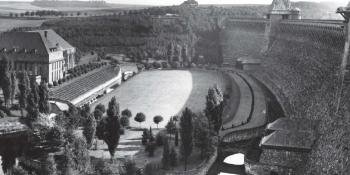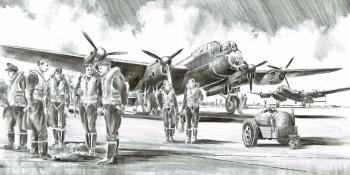The verdict of one Lancaster pilot sums up Operation ‘Paravane’ well. In fact, September 1944’s strike on the German battleship Tirpitz, mounted from the USSR, did rather more damage than first thought — though Nos 9 and 617 Squadrons would have to attack it again
With a top speed of 34kt, 15in guns capable of 22.4 miles’ range, impressive 5.9in secondary armament and formidable anti-aircraft defences, Tirpitz would have a notable impact on Allied maritime strategy. A powerful array of battleships, aircraft carriers, cruisers and destroyers retained in home waters to deal with a break-out could have been deployed to other hard-pressed theatres. When the USA entered the war, it too committed naval units to the protection of American merchant ships threatened by her.
Between July 1940 and August 1944, the RAF, the Fleet Air Arm and the Royal Navy vainly attempted to sink Tirpitz. Her menacing potential was underlined by the saga involving her sister-ship Bismarck and the dramatic sinking of HMS Hood. In July 1942, that Tirpitz…







